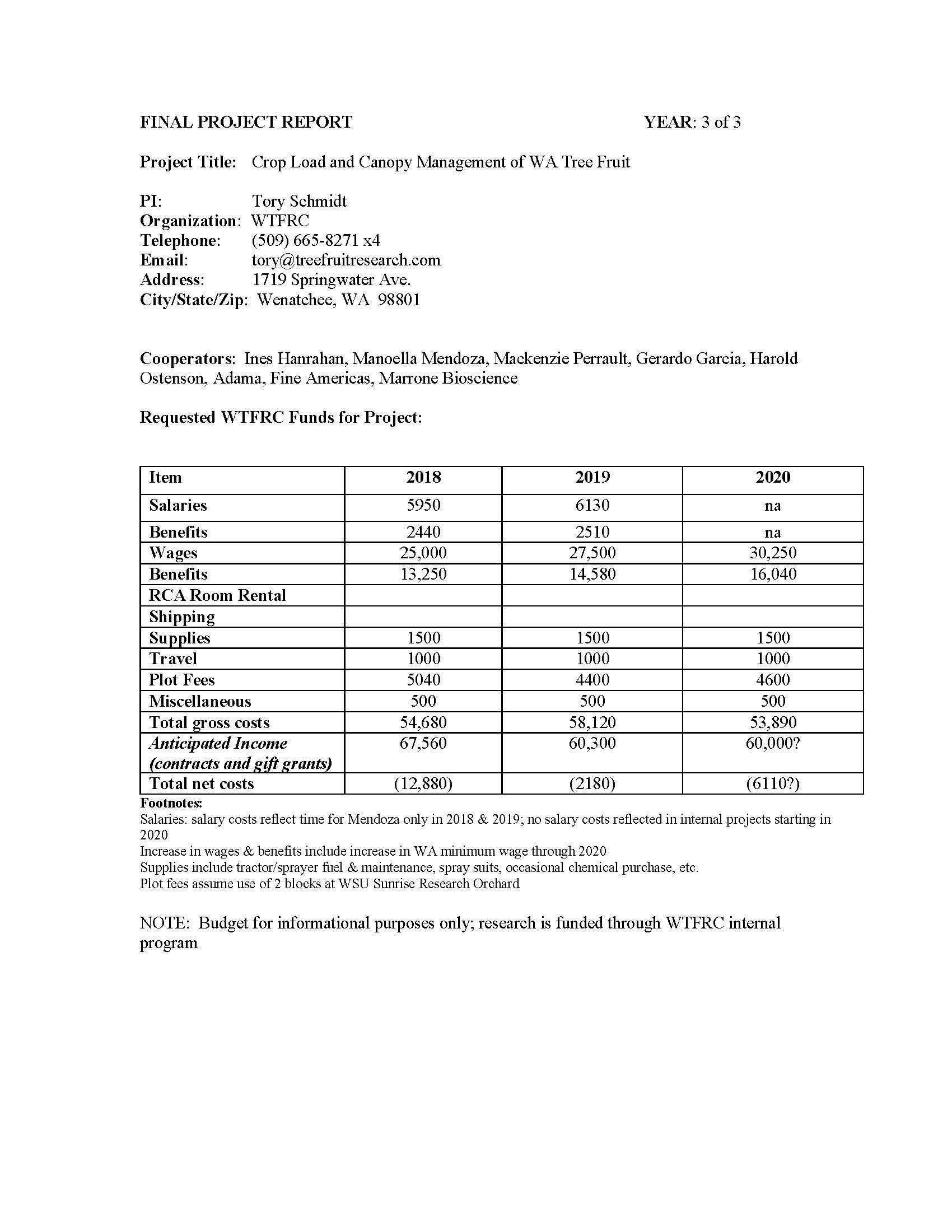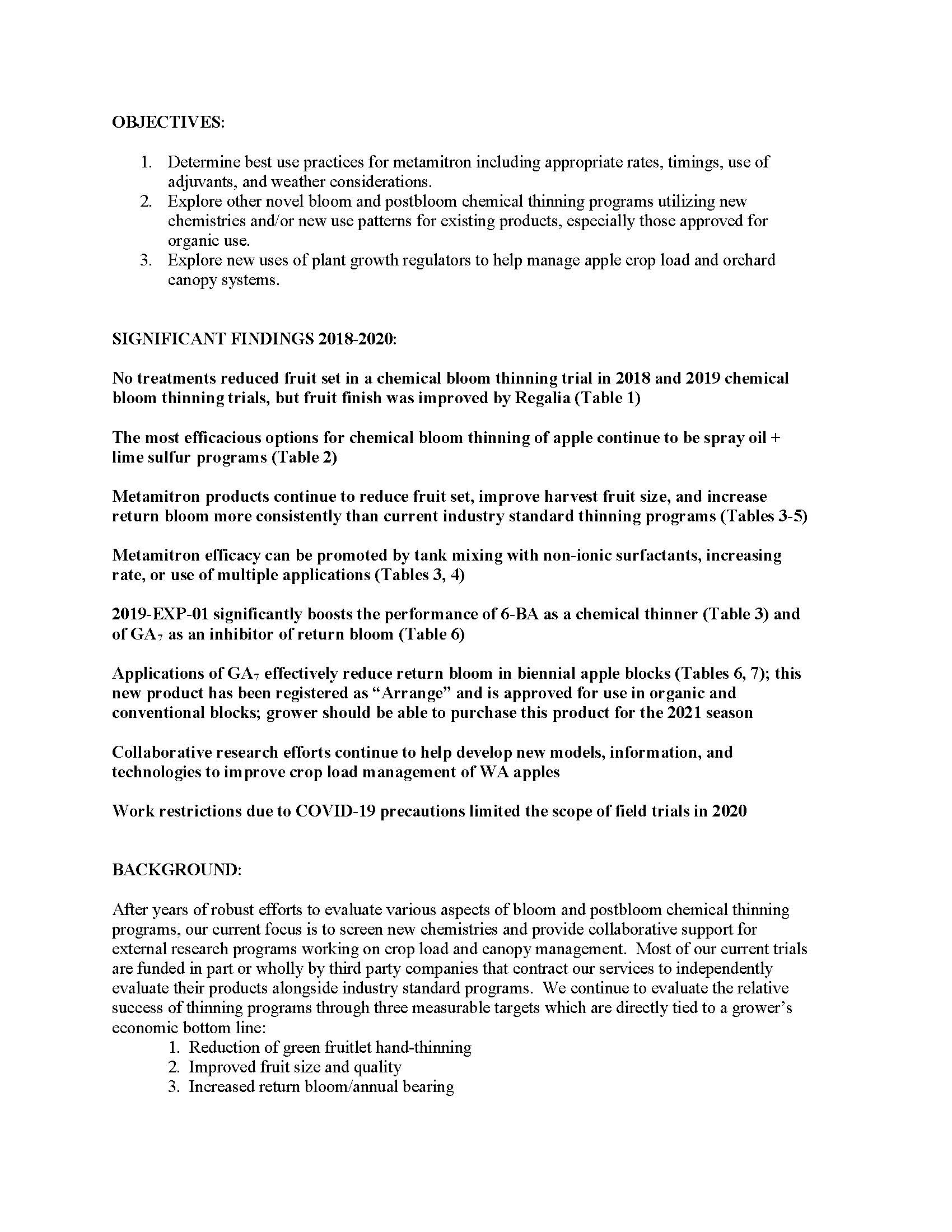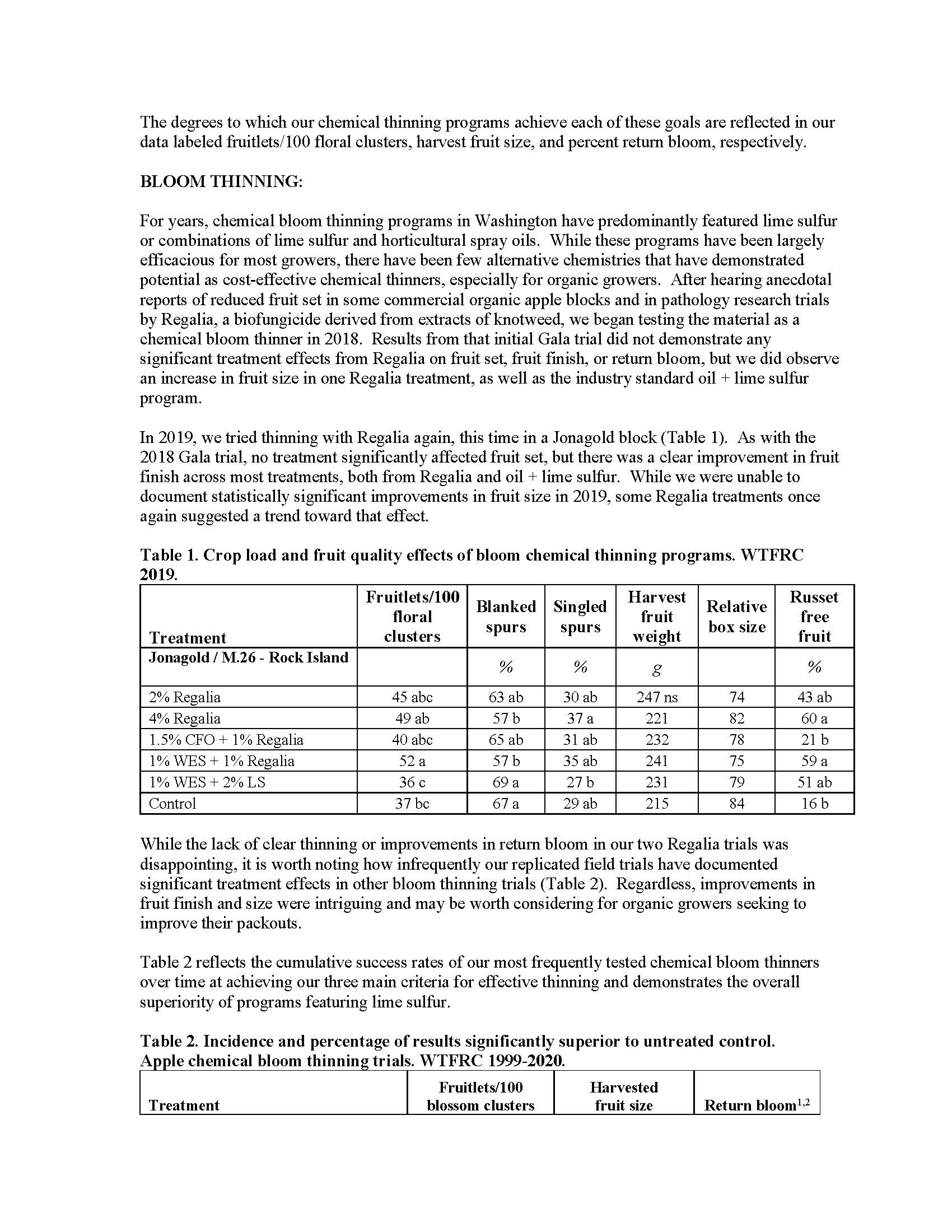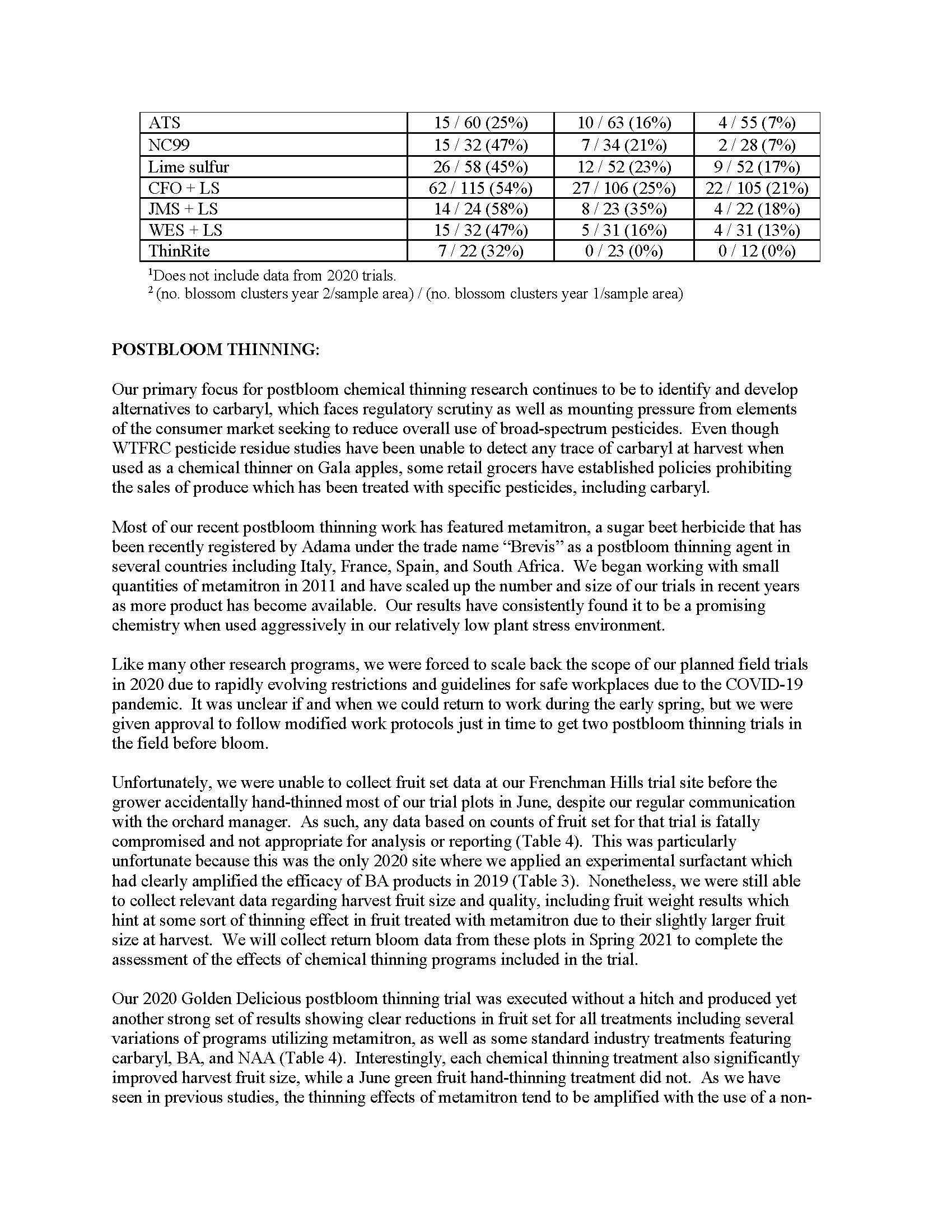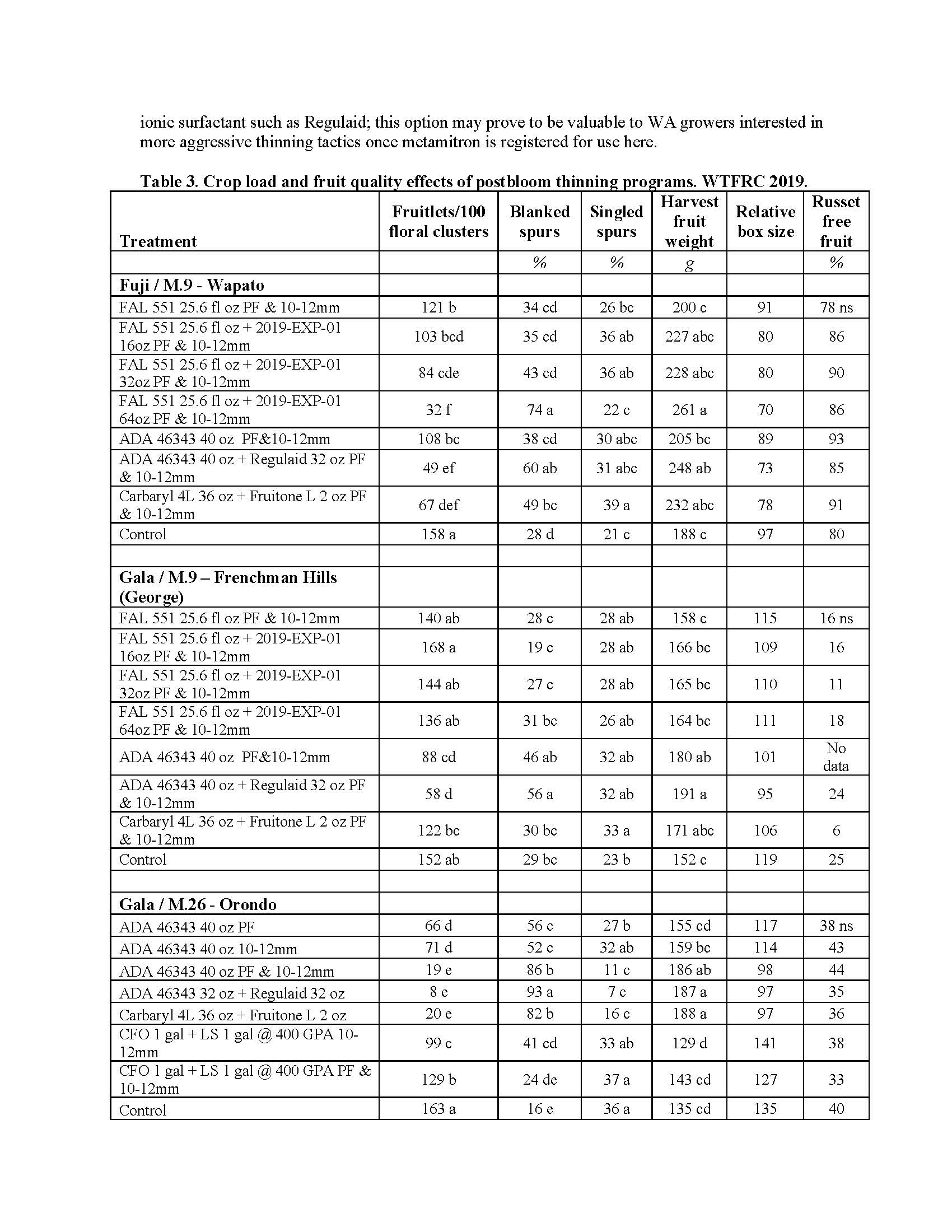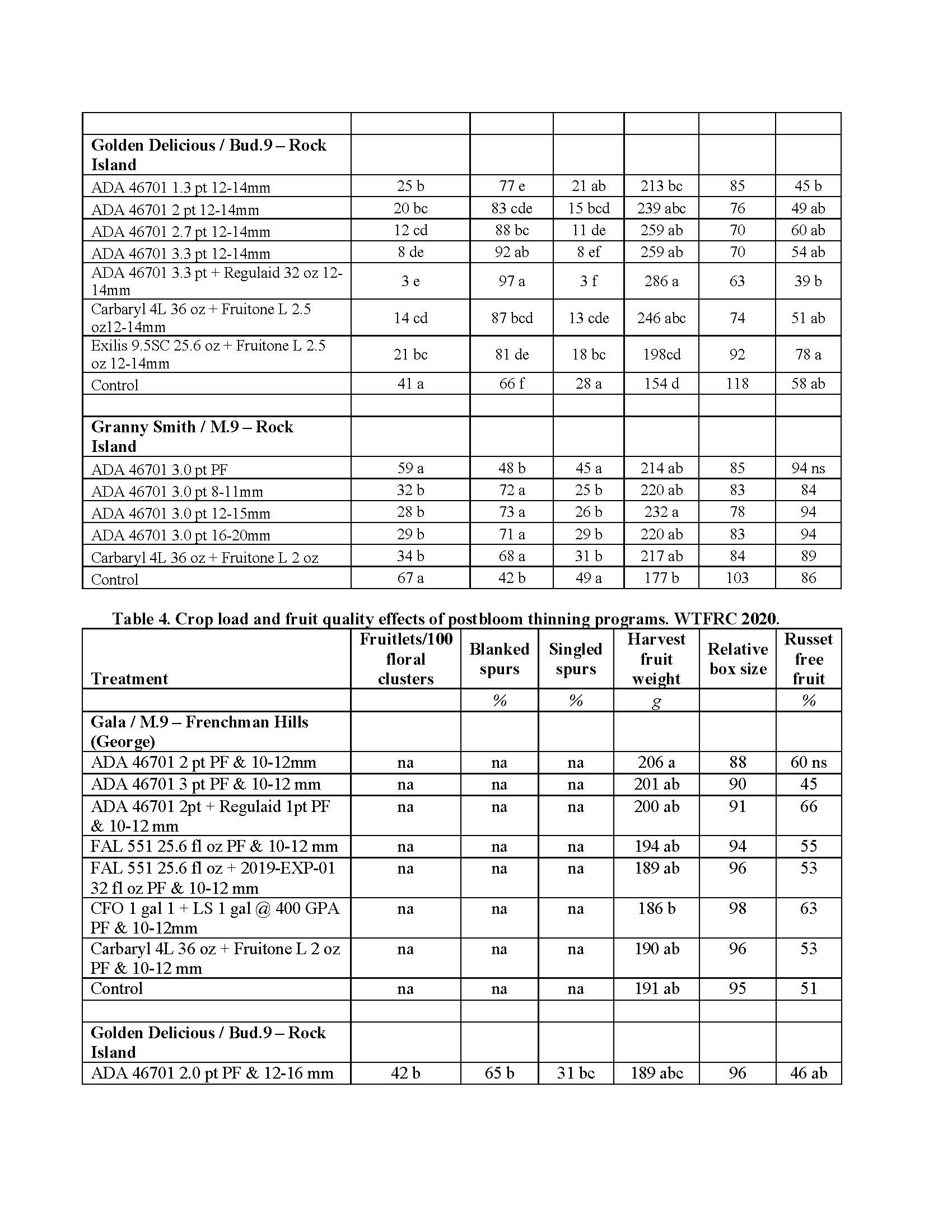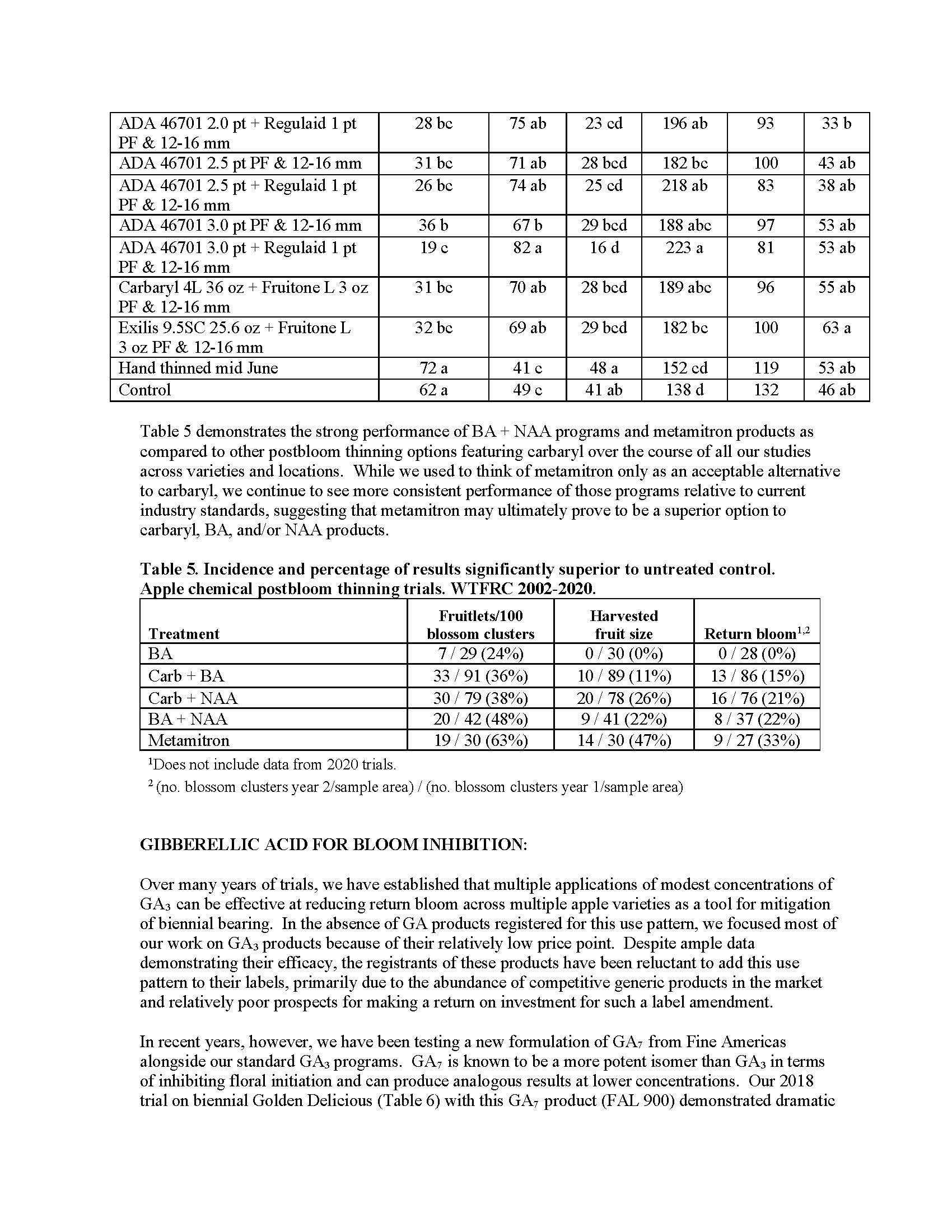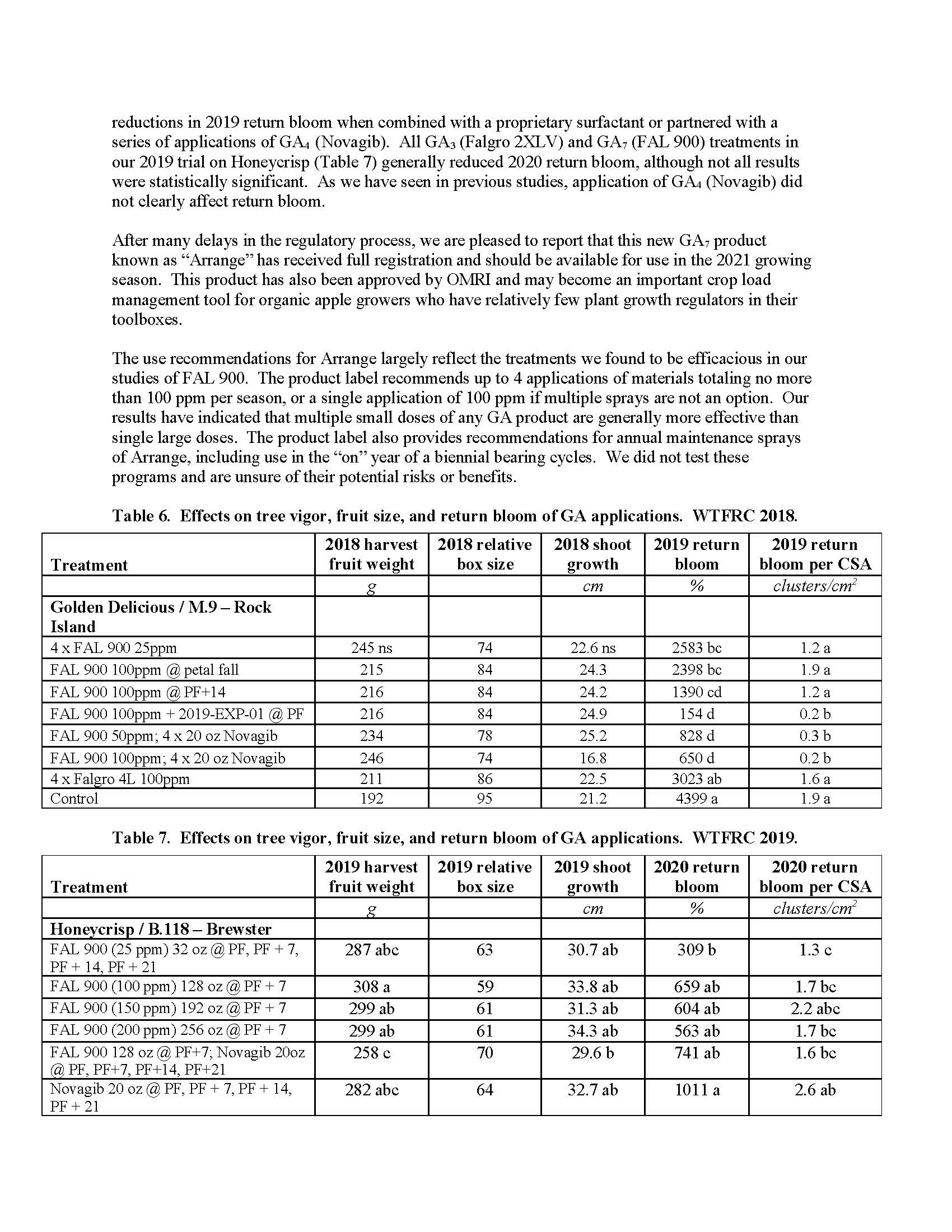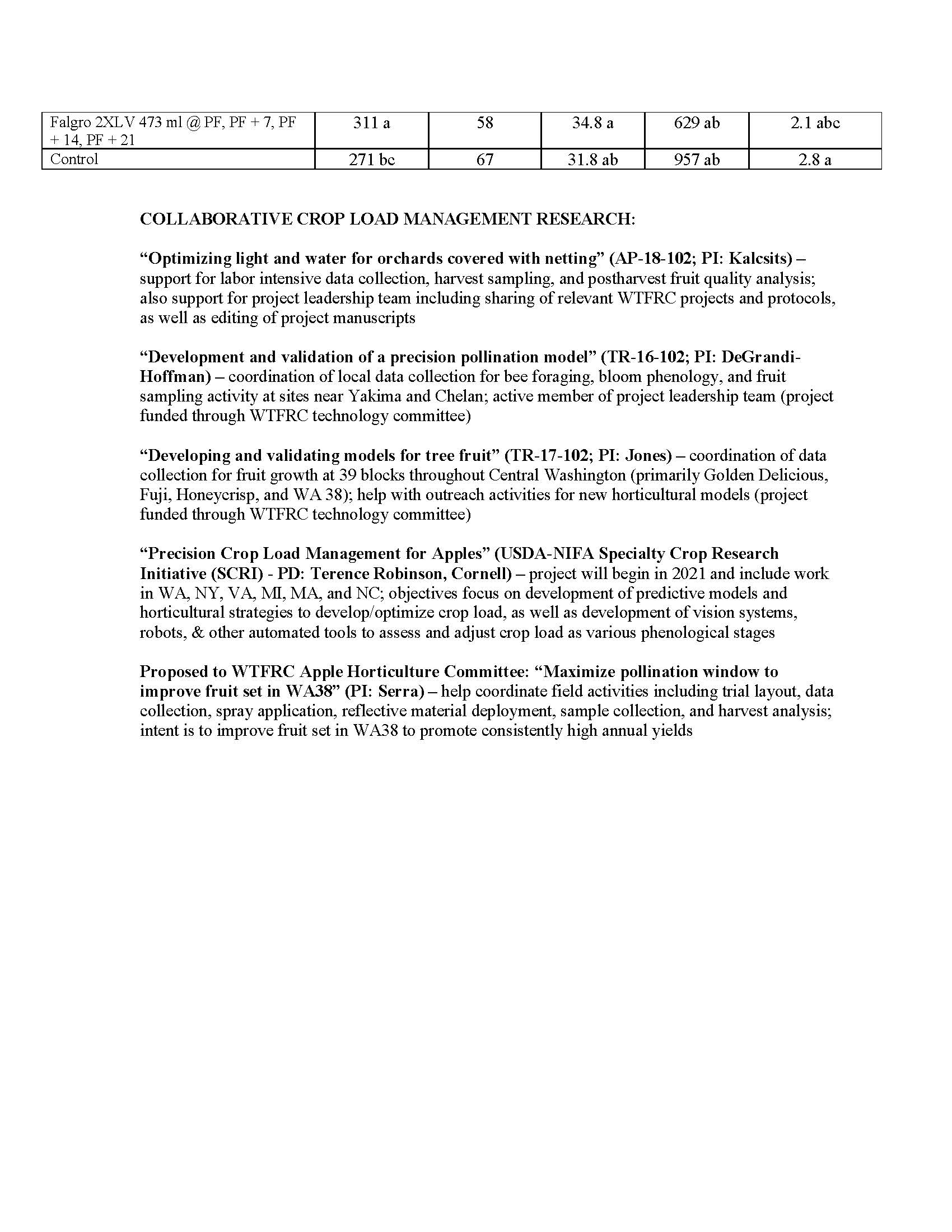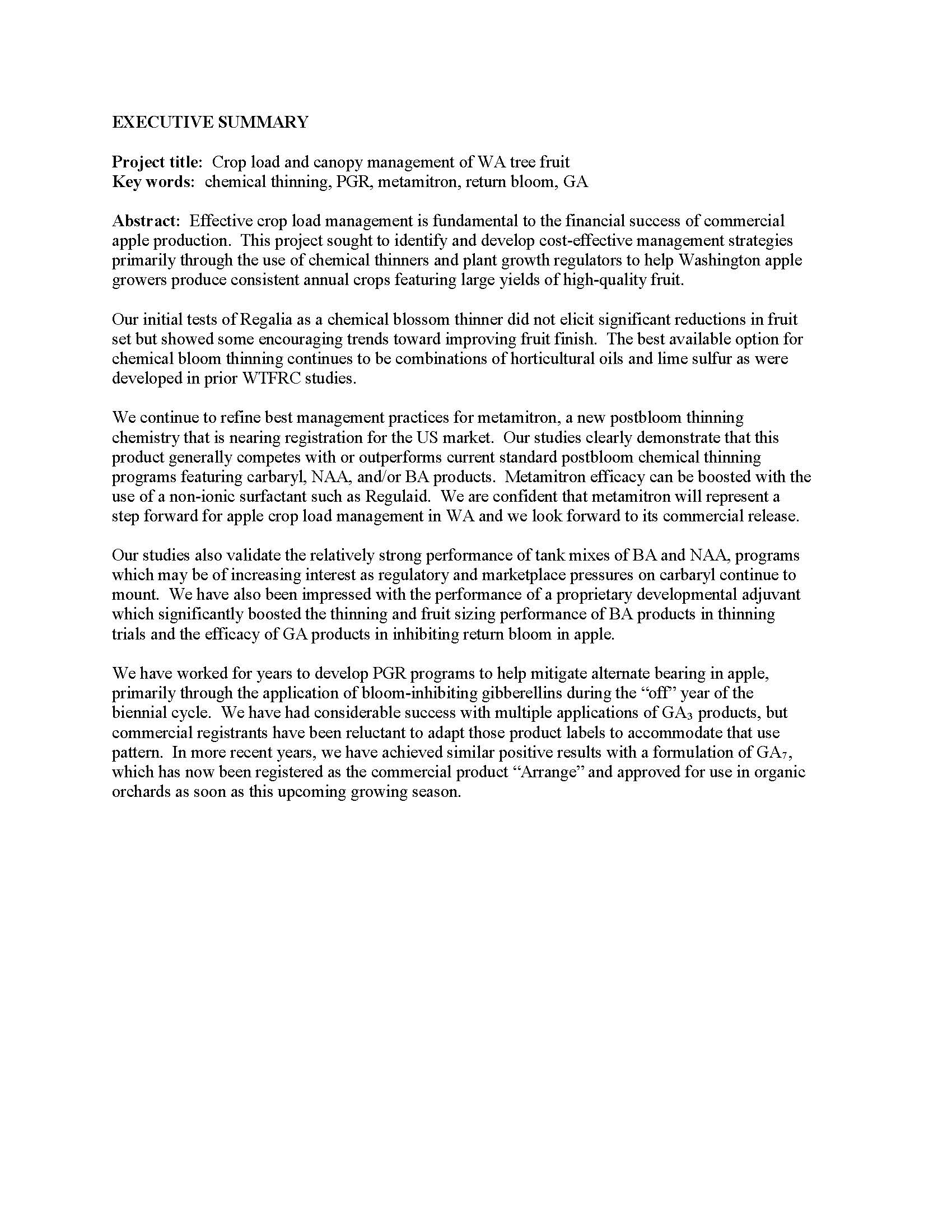Crop Load and Canopy Management of WA Tree Fruit
Author: Tory Schmidt
Published: 2021
Summary: Effective crop load management is fundamental to the financial success of commercial apple production. This project sought to identify and develop cost-effective management strategies primarily through the use of chemical thinners and plant growth regulators to help Washington apple growers produce consistent annual crops featuring large yields of high-quality fruit. Our initial tests of Regalia as a chemical blossom thinner did not elicit significant reductions in fruit set but showed some encouraging trends toward improving fruit finish. The best available option for chemical bloom thinning continues to be combinations of horticultural oils and lime sulfur as were developed in prior WTFRC studies. We continue to refine best management practices for metamitron, a new postbloom thinning chemistry that is nearing registration for the US market. Our studies clearly demonstrate that this product generally competes with or outperforms current standard postbloom chemical thinning programs featuring carbaryl, NAA, and/or BA products. Metamitron efficacy can be boosted with the use of a non-ionic surfactant such as Regulaid. We are confident that metamitron will represent a step forward for apple crop load management in WA and we look forward to its commercial release. Our studies also validate the relatively strong performance of tank mixes of BA and NAA, programs which may be of increasing interest as regulatory and marketplace pressures on carbaryl continue to mount. We have also been impressed with the performance of a proprietary developmental adjuvant which significantly boosted the thinning and fruit sizing performance of BA products in thinning trials and the efficacy of GA products in inhibiting return bloom in apple. We have worked for years to develop PGR programs to help mitigate alternate bearing in apple, primarily through the application of bloom-inhibiting gibberellins during the “off” year of the biennial cycle. We have had considerable success with multiple applications of GA3 products, but commercial registrants have been reluctant to adapt those product labels to accommodate that use pattern. In more recent years, we have achieved similar positive results with a formulation of GA7, which has now been registered as the commercial product “Arrange” and approved for use in organic orchards as soon as this upcoming growing season.
Keywords:

